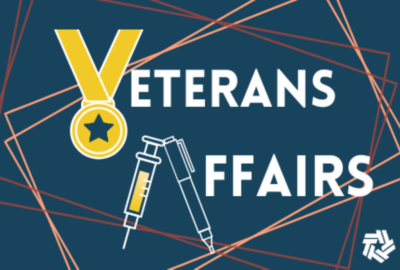The Department of Veterans Affairs is planning to spend the last of its COVID-19 emergency funding to support its day-to-day operations through the end of the fiscal year.
Members of the House VA Committee, however, are calling on the VA to return the money, now that the Biden administration has declared an end to the COVID-19 public health emergency.
Congressional Republicans and the Biden administration have also proposed clawing back unspent COVID funds across the federal government as part of ongoing negotiations to raise the debt ceiling.
The VA received $36.7 billion in total COVID-19 emergency appropriations.
VA Chief Financial Officer Jon Rychalski told lawmakers on Tuesday that the VA currently has $2.1 billion in remaining funds from the American Rescue Plan, and that it expects to fully spend those funds by the end of fiscal 2023.
Rychalski added that about $500 million of those ARP funds remain unobligated.
While committee Republicans are calling on the VA to turn over its unspent ARP funding, Rychalski said the ARP funds were “never set-aside for COVID,” and the spending package was designated as general-purpose funds for the agency’s fiscal 2023 budget.
“We communicated to Congress, they appropriated the funds, knowing that we had that money, that we were going to use that money for veterans this year. There’s no difference between the two. It’s not set aside for COVID,” Rychalski said.
Veterans Health Administration CFO Laura Duke said the agency is providing a higher level of health care to veterans this year, because of the long-term impacts of the pandemic.
“It was a higher level of care, because we’re still making up the deferred care and the long-term consequences of the pandemic. We do expect that our costs will be higher in the short run, and then will come back down as we proceed in the post-pandemic period,” Duke said.
Committee Chairman Mike Bost (R-Ill.) said the rules placed on VA for spending emergency COVID funds “got looser and looser with each bill.”
“By the time we got to [the American Rescue Plan] it looked a lot like a slush fund,” Bost said.
While the VA is currently tracking record growth in its workforce, the agency saw record turnover during the height of the pandemic, and relied on emergency funds to support new hires.
The VA used COVID spending to hire 136,000 new clinicians and administrative staff between fiscal 2020 and 2022. About 6,000 VHA employees volunteered to assist civilian or tribal health systems overwhelmed by COVID cases.
The Office of Personnel Management also granted the VA temporary direct-hire authority for several critical positions.
Rychalski said the VA is now seeing its lowest rate of improper payments in eight years, but the agency’s inspector general said the VA lacked proper oversight of COVID-19 spending.
A recent VA OIG report found the agency failed to follow its own internal controls in over 10,000 supply purchases and service contracts worth $187 million.
The VA OIG also found that the VA’s aging financial management system was unable to directly obligate COVID supplemental funds, and that agency officials relied on manual processes to move funds across VHA.
The watchdog office found these manual transfers limited transparency and accountability of employee payroll, contracted services and medical supply purchases.
Rychalski said the VA’s financial management system is 30 years old, and can’t easily adapt to the surge in emergency funding that happened during the pandemic.
“The crux of the issue is the accounting system is old and requires a lot of manual processes. I mean, it’s very heavily manual intensive,” he said.
VA is implementing a new financial management system, iFAMS, which may be able to resolve some of these issues. But VA IG Michael Missal said the VA doesn’t “expect a fully automated solution” will be ready this decade.
The VA OIG also found the VA’s decentralized financial management structure hampers spending transparency. Missal said the CFOs for VHA, the Veterans Benefits Administration and the National Cemetery Administration don’t report to Rychalski.
Meanwhile, the CFOs at Veterans Integrated Service Networks across the country don’t report to Duke.
Committee Ranking Member Mark Takano (D-Calif.) said he was “appalled to see the extent of the issue discovered by the inspector general.”
“I realize that during the pandemic things were stressful for all employees at VA, and that everyone was doing the best they could to procure supplies and contract for support. This does not, however, absolve VHA management from providing basic guidance to account for those funds,” Takano said.
Bost and Takano led the VA Transparency and Trust Act, which was signed into law in November 2021. The legislation requires the VA to submit biweekly reports on the obligations, expenditures and planned uses of COVID-19 emergency funds.
Copyright
© 2024 Federal News Network. All rights reserved. This website is not intended for users located within the European Economic Area.

